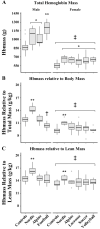Sex Differences in VO2max and the Impact on Endurance-Exercise Performance
- PMID: 35564339
- PMCID: PMC9105160
- DOI: 10.3390/ijerph19094946
Sex Differences in VO2max and the Impact on Endurance-Exercise Performance
Abstract
It was not until 1984 that women were permitted to compete in the Olympic marathon. Today, more women than men participate in road racing in all distances except the marathon where participation is near equal. From the period of 1985 to 2004, the women's marathon record improved at a rate three times greater than men's. This has led many to question whether women are capable of surpassing men despite the fact that there remains a 10-12% performance gap in all distance events. The progressive developments in sports performance research and training, beginning with A.V. Hill's establishment of the concept of VO2max, have allowed endurance athletes to continue performance feats previously thought to be impossible. However, even today women are significantly underrepresented in sports performance research. By focusing more research on the female physiology and sex differences between men and women, we can better define how women differ from men in adapting to training and potentially use this information to improve endurance-exercise performance in women. The male advantage in endurance-exercise performance has commonly been attributed to their higher VO2max, even when expressed as mL/kg/min. It is widely known that oxygen delivery is the primary limiting factor in elite athletes when it comes to improving VO2max, but little research has explored the sex differences in oxygen delivery. Thus, the purpose of this review is to highlight what is known about the sex differences in the physiological factors contributing to VO2max, more specifically oxygen delivery, and the impacts on performance.
Keywords: athletic performance; exercise physiology; oxygen consumption; sex differences.
Conflict of interest statement
The authors declare no conflict of interest.
Figures







References
-
- Running USA Trends Report. [(accessed on 31 July 2021)]. Available online: https://www.wpr.org/sites/default/files/running_usa_trends_report_2019-r....
Publication types
MeSH terms
Substances
LinkOut - more resources
Full Text Sources
Miscellaneous

